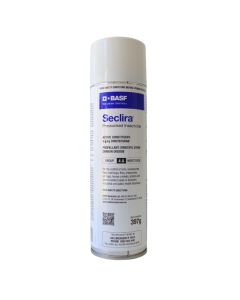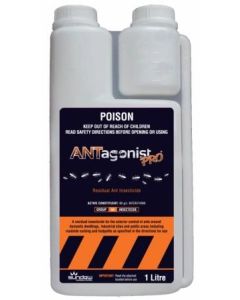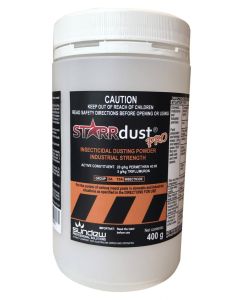Redback Spider
- Article
- Redback Spider
Redback Spider
Scientific Name: Latrodectus hasselti
How to identify a redback spider
Redback spiders (Latrodectus hasselti) belong to the Family Theridiidae, which is found worldwide. Female Redback Spiders are black (occasionally brownish) with an obvious orange to red longitudinal stripe on the upper abdomen, with the red stripe sometimes being broken, and an "hourglass" shaped red/orange spot on the underside of the abdomen. Juveniles have additional white markings on the abdomen. Females have a body about the size of a large pea and slender legs. The males' red markings are often less distinct. The body is light brown with white markings on the upper side of the abdomen, and a pale hour-glass marking on the underside.

Where are redback spiders commonly found?
Redback Spider webs consist of a tangled, funnel-like upper retreat area from which vertical, sticky catching threads run to ground attachments. The Redback Spider favours proximity to human habitation, with webs being built in dry, sheltered sites, such as among rocks, in logs, shrubs, junk-piles, sheds, or toilets. Redback Spiders are less common in winter months.
Why are redback spiders considered a pest?
Redback bites occur frequently, particularly over the summer months. More than 250 cases receive antivenom each year, with several milder envenomations probably going unreported. Only the female bite is dangerous. They can cause serious illness and have caused deaths. However, since Redback Spiders rarely leave their webs, humans are not likely to be bitten unless a body part such as a hand is put directly into the web, and because of their small jaws many bites are ineffective. The venom acts directly on the nerves, resulting in release and subsequent depletion of neurotransmitters.
Common early symptoms are pain (which can become severe), sweating (always including local sweating at bite site), muscular weakness, nausea and vomiting. Antivenom is available. No deaths have occurred since its introduction.
Apply an ice pack to the bitten area to relieve pain. Do not apply a pressure bandage (venom movement is slow and pressure worsens pain). Collect the spider for positive identification. Seek medical attention.
What is the biology and lifecycle of a redback spider?
Once the female has mated, she can store sperm and use it over a period of up to two years to lay several batches of eggs. She spends much time producing up to ten round egg sacs (1cm diameter), which are white, weathering to brown over time. Each egg sac contains approximately 250 eggs and only one to three weeks need to pass before more eggs can be laid. These sacs are suspended within the web. Sometimes small ichneumonid wasps parasitise them, puncturing each sac with tiny holes. The young spiderlings hatch in two to four weeks. Spiderlings are cannibalistic and will eat unhatched eggs and other spiderlings. The spiderlings disperse by ballooning to another suitable nest site on long silk threads that are caught by air currents.
Females mature on average in about four months. The smaller male matures on average in about 90 days. Females may live for two to three years, whereas males only live for about six or seven months.
Management Tips for Redback Spider
Other than keeping the perimeter of the property clear of rubbish and vegetation, spraying for redbacks is the best method of control / prevention.
Redbacks tend to build their webs in sheltered dry areas. Target redback nesting areas such as fencing (particularly inside tubular metal fencing), retaining walls, rocks and logs. They can sometimes also be found in roof voids, where it is also warm and dry, so check the roof void each year and treat as required.
General Spider Prevention Tips
-
Keeping garden beds and rubbish away from the edge of the house will significantly reduce the spider population.
-
If garden beds next to the house are kept in place, it is important to keeping vegetation trimmed back from the edge of the house and paths.
-
Make sure insect screens and draft excluders are in good repair and well fitting
-
Keep clothes and shoes off the floor to reduce spider hiding places.
General Spider Control Tips
-
The best treatment for web-building spiders is to spray their webs and hiding places with an insecticide (ready to use pump back or aerosol). The key tip to get the best performance is to wait a day or two after spraying before brushing down any webs. This ensures the spiders will have picked up a lethal does of insecticide (by walking on the web) and by using a brush (rather than hose), you can ensure the insecticide remains in place to prevent new spiders taking up residence.
-
To prevent web-building spiders take up residence in the first place, spraying around doors, windows and vents, as well as under eaves and guttering delivers excellent results. As these spots tend to be sheltered from sun and rain, the treatment can last many months.
-
It is a lot more difficult to prevent running spiders entering the home. Carrying out a preventative spray around the perimeter of the home and any openings will have some benefit, although running spiders often walk on the tips of their legs, preventing them from picking up a lethal dose of insecticide. However, if you carry out a preventative treatment for web-building spiders and other insects, the numbers of running spiders will be greatly reduced, as there will be little prey for them to feed on.
-
Even with the best control program the occasional spider may get in. A crawling insect aerosol should be kept on hand to spray the occasional unwanted spider. Ensure the spider receives a good dose and keep your distance.
PRODUCT SOLUTIONS
-
 Seclira Pressurised Insecticide 397g5g/kg Dinotefuran
Seclira Pressurised Insecticide 397g5g/kg DinotefuranSeclira Pressurised Insecticide is a fast-acting, non-repellent, ready-to-use product with System III compatibility for the control of a broad range of pests including ants, and cockroaches.
-
 Coopex Dust Insecticidal Dusting Powder10g/kg Permethrin
Coopex Dust Insecticidal Dusting Powder10g/kg PermethrinCoopex Dust Insecticidal Dusting Powder is registered for the control of cockroaches, ants, fleas, silverfish and bed bugs in and around domestic and industrial premises, food preparation and storage areas. Also for control of mushroom flies in mushroom housing and bees in wall cavities.
-
 Biflex Aqua Max Insecticide and Termiticide100g/L Bifenthrin
Biflex Aqua Max Insecticide and Termiticide100g/L BifenthrinBiflex AquaMax is the first ever Professional Strength, multi-insecticide and termiticide. Effective on a wide range of common household pests and all termite species in Australia.
-
 Antagonist Pro Insecticide80g/L Bifenthrin
Antagonist Pro Insecticide80g/L BifenthrinANTagonist PRO insecticide is a suspension concentrate formulation containing a Polymer Enhanced Synthetic Pyrethroid approved for the treatment of ants, spiders, wasps, cockroaches, mosquitoes, midges, fleas, flies, ticks, termites and turf pests including lawn armyworms, sod webworms, argentine stem weevil, billbug, African black beetle, ants and ornamental pest including mites, aphids, caterpillars, loopers, earworm, budworm, light brown apple moth, whitefly, mealybug, thrips and cutworms.
-
 Delta Pro 25SC Professional Insecticide25g/L Deltamethrin
Delta Pro 25SC Professional Insecticide25g/L DeltamethrinFor the control of a range of insect pests such as spiders, cockroaches, flies, ants, mosquitoes in various situations.
-
 Biflex Ultra Lo-Odour 100EC Termiticide & Insecticide100g/L Bifenthrin, 533g/L Liquid Hydrocarbons
Biflex Ultra Lo-Odour 100EC Termiticide & Insecticide100g/L Bifenthrin, 533g/L Liquid HydrocarbonsBiflex Ultra-Lo-Odour Termiticide and Insecticide is a cost-effective, broad spectrum, long residual, liquid insecticide and termiticide for use as an internal and external treatment of a wide range of pests.
-
 Suspend Flexx Insecticide25g/L Deltamethrin
Suspend Flexx Insecticide25g/L DeltamethrinSuspend Flexx Insecticide is a synthetic pyrethroid (3A) formulation for the knockdown and residual control of a range of insect pests in various indoor and outdoor situations.
-
 Starrdust PRO One-Shot Insecticidal Dust 400g20g/kg Permethrin, 5g/kg Triflumuron
Starrdust PRO One-Shot Insecticidal Dust 400g20g/kg Permethrin, 5g/kg TriflumuronThe Starrdust PRO One-Shot Insecticidal Dust 400g is an industrial-strength dust designed for use with the Starrdust PRO Duckbill Duster. It is a ready-to-use broad-spectrum insecticide with a unique formulation. It controls a wide range of insect pests including cockroaches, silverfish, spiders, ants, fleas, carpet beetles, bed bugs, European wasps, feral honey bees, bird mites, subterranean termites, hide beetles, millipedes, woodlice and clothes moths.
-
 Starrdust PRO One-Shot Insecticidal Dust 19 x 400g + Duckbill20g/kg Permethrin, 5g/kg Triflumuron
Starrdust PRO One-Shot Insecticidal Dust 19 x 400g + Duckbill20g/kg Permethrin, 5g/kg TriflumuronA convenient kit of 19 x Starrdust PRO One-Shot Insecticidal Dust 400g Pods and a bonus Duckbill Duster. StarrDust PRO is an industrial-strength dust designed for use with the Starrdust PRO Duckbill Duster. It is a ready-to-use broad-spectrum insecticide with a unique formulation. It controls a wide range of insect pests including cockroaches, silverfish, spiders, ants, fleas, carpet beetles, bed bugs, European wasps, feral honey bees, bird mites, subterranean termites, hide beetles, millipedes, woodlice and clothes moths.
-
 Tempo Residual Insecticide 1L25 g/L betacyfluthrin
Tempo Residual Insecticide 1L25 g/L betacyfluthrinTempo Residual Insecticide is a fast-acting, knock-down, broad-spectrum insecticide for general insect control in domestic and commercial situations, as well as for the control of pest insects of turf and ornamental plants.
JOIN OUR NEWSLETTER NOW!
Be the first to hear about the latest specials, products, tips and ideas.

